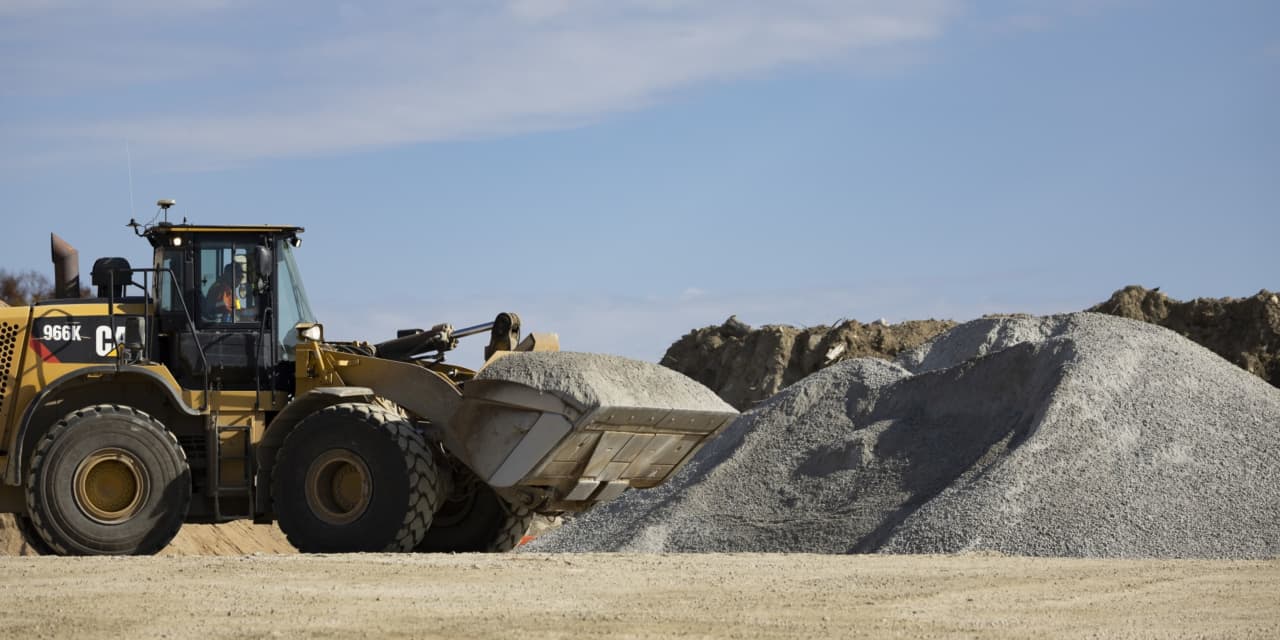Demand for graphite for use in batteries has grown by 250% globally since 2018, and is expected to continue to increase as the electric-vehicle market grows. The batteries found in an average electric vehicle each need about 175 to 200 pounds of graphite.
The problem is that China produces more graphite than any other country, while the U.S. heavily relies on imports. That gives Beijing leverage to push back, as it did Friday, when the U.S. takes advantage of its dominance in semiconductors by limiting China’s access to the highest-end chips.
In the U.S., there are four lithium-ion battery plants in operation, with another 21 in development. At full capacity, these plants are expected to require about 1.2 million tons of spherical graphite—a refined form used as anodes in lithium-ion batteries—every year, according to the United States Geological Survey.
Graphite can be produced either from naturally mined material or in a synthetic process using petroleum feedstocks. China is by far the leader in both areas.
Last year, China mined 850,000 tons of natural graphite, about 65% of the world’s total production. The country also processed most of the battery-grade spherical graphite.
The U.S., on the other hand, doesn’t mine or produce any natural graphite. From 2018 to 2021, about 33% of U.S. imports came from China, followed by 18% and 17% from Mexico and Canada, respectively.
American companies have been looking to cut their dependence on China. Africa has been a hot spot for graphite exploration. Mozambique and Madagascar are the second and third largest miners of natural graphite behind China, with 170,000 tons and 110,000 tons of production in 2022, respectively.
Turkey has the world’s largest graphite reserves, but production has stayed low due to a lack of exploration and technological knowledge. Madagascar’s and Mozambique’s reserves together are nearly as big as China’s. But it would be difficult for those countries to compete as suppliers without significant investment. Boosting their production would take time.
A few companies have also been developing graphite-mining projects in the U.S. Graphite One Resources is focused on deposits in untouched tundra in Alaska, while
Westwater Resources
is working on deposits in a river ecosystem in Alabama. Both those projects face challenges from environmentalists.
Washington is also making strides in building domestic refining capacity for natural graphite. Last year, the Biden administration awarded more than a dozen companies a combined $2.8 billion to build and expand commercial-scale facilities in the U.S. for the production of battery materials, including graphite.
Australia-based
Syrah Resources
was one of them. It is building a plant in Vidalia, La., to process raw graphite mined from Mozambique into anodes. The factory is on course for completion by the end of this year and is expected to initially produce 11,250 tons of battery-grade graphite a year.
In 2022, the Vidalia project was awarded a grant of up to $220 million under the Bipartisan Infrastructure Law to expand its production capacity to 45,000 tons a year.
Westwater Resources is building another plant in Kellyton, Ala., that is expected to produce 7,500 metric tons of refined battery-grade graphite each year. The U.S. imported a total of 82,000 tons of graphite last year.
Graphite can also be manufactured from other carbon-based products such as petroleum coke. The process is more expensive and energy intensive, but the synthetic graphite anodes usually perform better, helping batteries charge faster and last longer. China generated nearly 70% of the world’s synthetic graphite last year.
The U.S. is investing heavily in the space as well. Chicago-based Anovion Technologies is opening a plant in Bainbridge, Ga., that is expected to produce 40,000 metric tons of synthetic graphite anode material a year. The USGS expects 40% to 60% of America’s future graphite consumption to be synthetic.
China’s new controls on graphite, announced on Friday, aren’t an outright ban, but would require companies to obtain additional permits for their imports. This could create uncertainty for industries dependent on the Chinese product.
The rules came just days after the U.S. government tightened controls on exports of advanced semiconductors to China, marking the latest escalation of the tech trade war between the world’s two largest economies.
In recent years, many EV manufacturers, including Tesla, have made deals to secure graphite supplies outside of China. Still, Beijing’s export controls could raise prices of the material across the board as companies from around the world bid for limited supplies.
Besides graphite, China is the dominant supplier of many minerals used in key tech products, and is taking advantage of that strength. In July, Beijing announced similar restrictions on gallium and germanium, metals critical to the manufacturing of semiconductors.
Write to Evie Liu at [email protected]
Read the full article here







